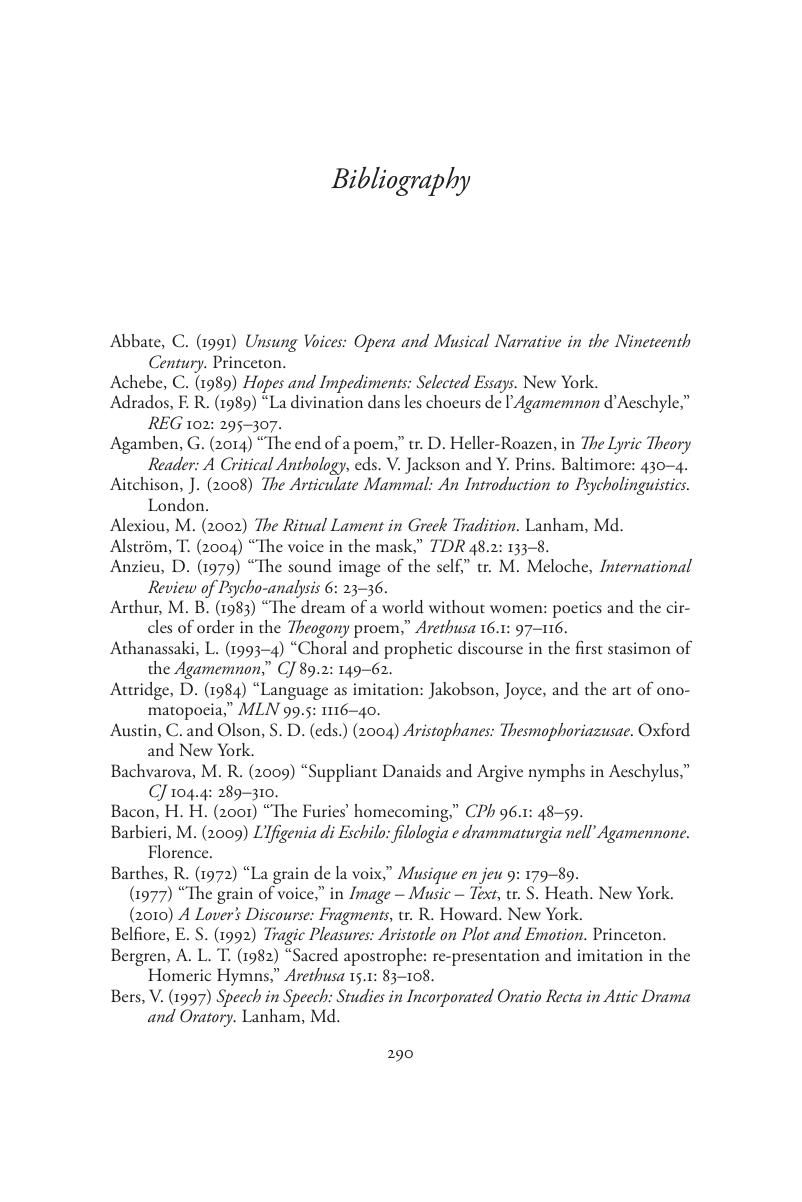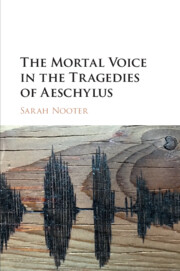Book contents
- The Mortal Voice in the Tragedies of Aeschylus
- The Mortal Voice in the Tragedies of Aeschylus
- Copyright page
- Dedication
- Contents
- Acknowledgements
- Notes on the Text and Cover
- Introduction
- Chapter 1 Voice, Body, Stage
- Chapter 2 Voice in Early Aeschylean Drama and Aristophanic Parody
- Chapter 3 Voice and Ventriloquism in Agamemnon
- Chapter 4 Voice and the Mother in Choephori
- Chapter 5 Voice and the Monstrous in Eumenides
- Bibliography
- Index
- References
Bibliography
Published online by Cambridge University Press: 13 October 2017
- The Mortal Voice in the Tragedies of Aeschylus
- The Mortal Voice in the Tragedies of Aeschylus
- Copyright page
- Dedication
- Contents
- Acknowledgements
- Notes on the Text and Cover
- Introduction
- Chapter 1 Voice, Body, Stage
- Chapter 2 Voice in Early Aeschylean Drama and Aristophanic Parody
- Chapter 3 Voice and Ventriloquism in Agamemnon
- Chapter 4 Voice and the Mother in Choephori
- Chapter 5 Voice and the Monstrous in Eumenides
- Bibliography
- Index
- References
Summary

- Type
- Chapter
- Information
- The Mortal Voice in the Tragedies of Aeschylus , pp. 245 - 289Publisher: Cambridge University PressPrint publication year: 2017



